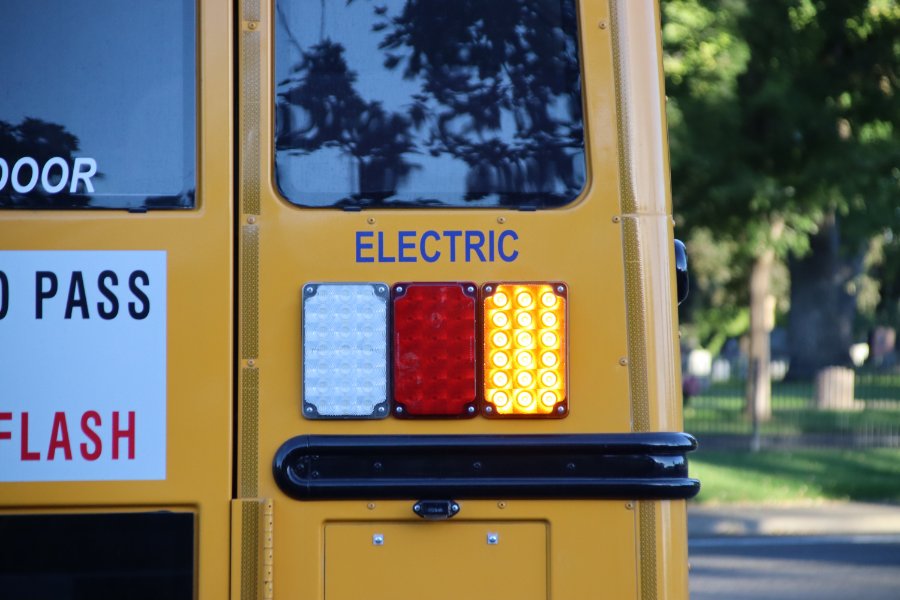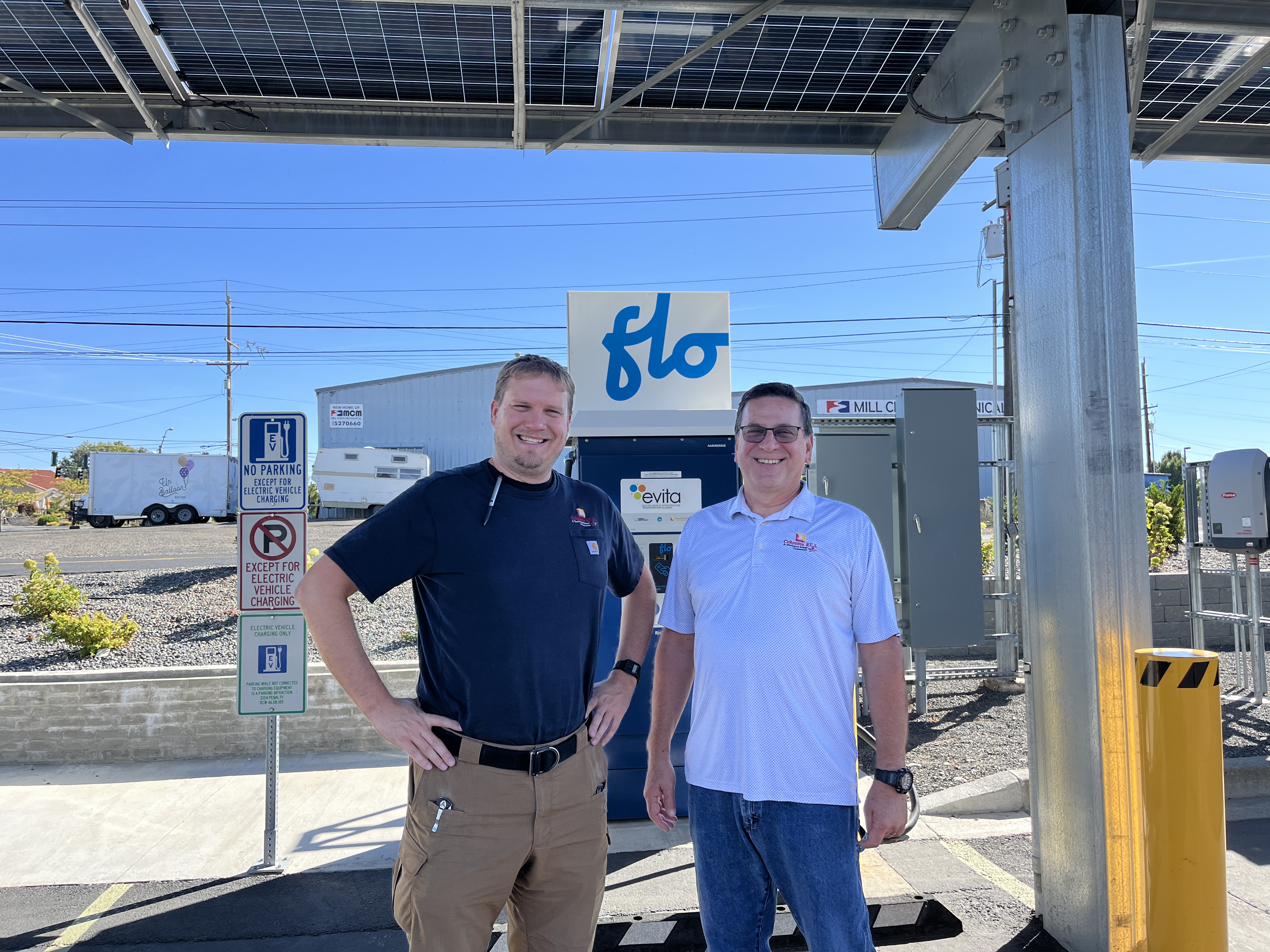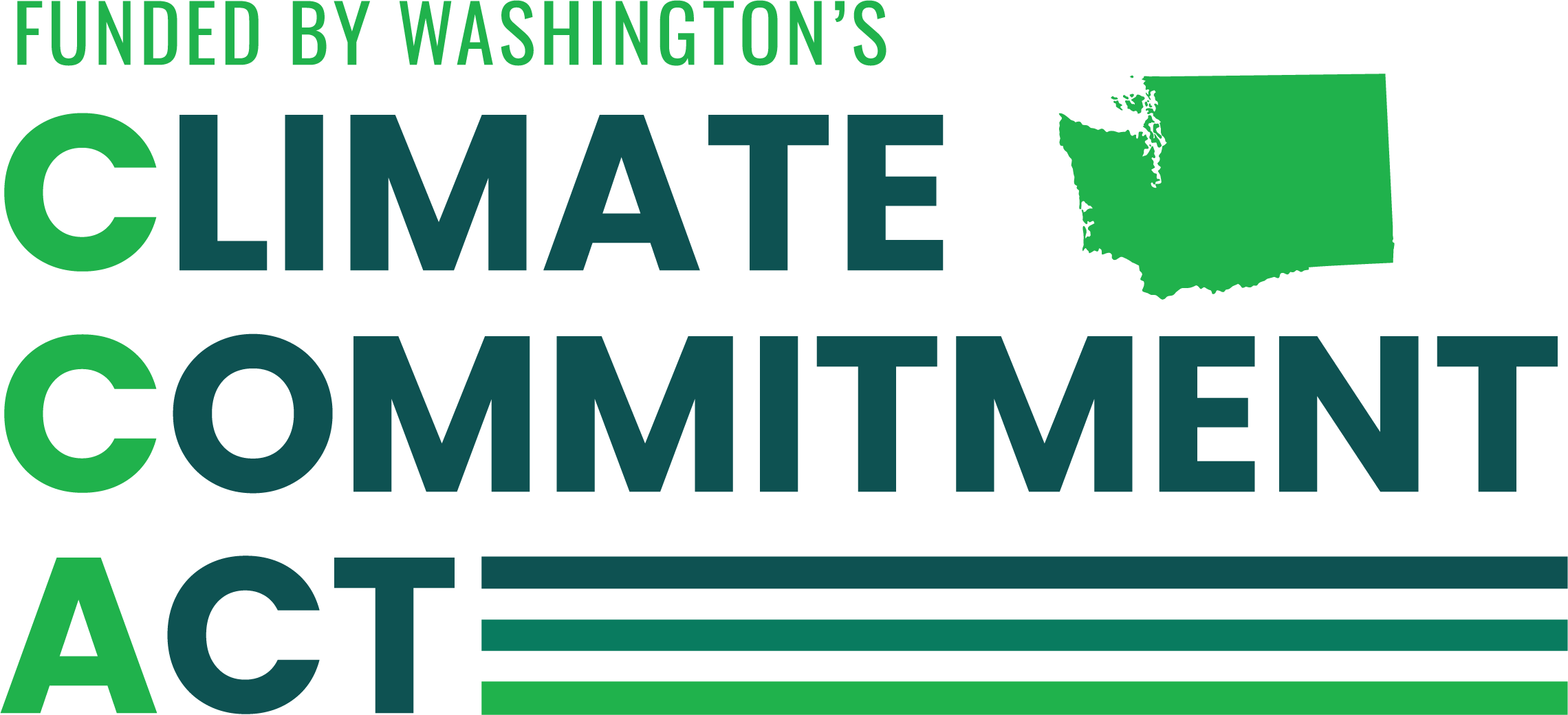
An electric bus parks outside Prospect Point Elementary School after dropping off students.
If you look at an electric bus next to a diesel one, you might not be able to immediately tell the difference. The inside and outside look roughly the same. The biggest change is what isn’t there — noise!
It’s something kids notice right away. The bus drivers can hear chatter all the way from the back of an electric bus. Bus drivers also enjoy the air conditioning and increased horsepower. And there are some things that take getting used to, such as a new braking system with additional safety features.
“It’s learning as we go,” says Angie Ewell, who has driven a school bus in Walla Walla for nine years. Since she started driving an electric bus last year, she has found no major challenges.
“These buses are very dependable and have run every single day,” she said. “And if there’s a problem that the district’s mechanics can’t fix, the bus or charger manufacturers will send someone out.”
Walla Walla school bus driver Angie Ewell stands in front of an electric school bus.
School officials said even in cold weather, the electric buses work great, despite some common misconceptions.
“It gets pretty darn cold in Walla Walla, and we’ve had no problems running our fleet during the wintertime,” said Wade Smith, superintendent of public instruction for Walla Walla Public Schools. "In fact," Smith said, "the electric buses have better all-around traction because the battery pack is in the middle of the bus, as opposed to an engine in the front or rear of a diesel-powered bus."
Public reaction has been positive so far. The biggest concern seems to be how quiet they are. "When it gets cold outside, kids like to stay indoors until they can hear the bus coming. But now they can’t," said Griffith, "for fear of missing it altogether."
“They work well. Our bus drivers absolutely love them, our kids love them,” added Smith. “Very rarely do you come across this win-win-win scenario that you have right now with the electric fleets.”
Quieter, cleaner, greener
Electric buses don’t just reduce noise — they reduce air and climate pollution. Among the most harmful air pollutants in Washington is diesel exhaust, a mixture of dangerous substances and chemicals, including fine particle pollution, nitrogen oxides, carbon monoxide, and hydrocarbons. Matt Kadlec, senior toxicologist at Ecology, said many of these substances are carcinogenic and can also cause eye and throat irritation, asthma, bronchitis, lightheadedness, and nausea.
“The chances of experiencing these harmful effects increase the more someone breathes in diesel exhaust,” Kadlec explained. “Children are more susceptible than adults because they have higher respiration rates and because their ability to detoxify isn’t as developed.”
“I like them! They’re quiet,” says Kaimbry Neal, a fifth grader at Garrison Middle School, when asked what she thinks of the new electric school buses.
Diesel exhaust also contains carbon dioxide, the primary greenhouse gas heating the planet’s atmosphere and creating the global climate crisis. Transportation is the state’s largest source of climate pollution, producing 39% of all greenhouse gas emissions. So, reducing the number of fossil-fueled vehicles on the road offers greater protection for human health and the environment.
It’s a mission supported by administrators and students alike. Walla Walla High School has two clubs that focus on the environment: the Green Club and Walla Walla Students for Climate Action. Both advocated for electric school buses and undertake other local conservation and sustainability projects, too.
“I’m glad the district is focusing on electric buses,” said Green Club President Ari Kim-Leavitt. “For elementary school kids, it’s a beneficial environmental practice that will be ingrained from a young age.”
Club Secretary Sophia Templin agreed. “One of the best forms of change is subtle change, where the people being affected may not notice but the overall impact is great,” she said.
Highschoolers and Green Club members Ari Kim-Leavitt and Sophia Templin think electric school buses raise awareness of important environmental issues. They stand in a rain garden, just one example of a Green Club project, outside of Walla Walla High School.
The students hope introducing these new buses will have a ripple effect, encouraging others in the community to adopt sustainable practices, take on eco-friendly projects, and affect long-term, positive change.
In it for the long haul
Walla Walla’s electric school bus project is a long-term commitment to sustainability and the community. The district partnered with Columbia Rural Electric Association (REA), a local electricity provider, to install and support the necessary infrastructure to charge the batteries that fuel the buses. Knowing the district planned to expand their electric fleet, Columbia REA made sure to anticipate additional demands in advance.
“We set up the charging infrastructure so we could keep upsizing the transformer as they add more buses,” said Field Engineer Bryan Maas.
Columbia REA was a natural partner for a project that aims to make Walla Walla cleaner and healthier.
“Our entire operation is right here in Walla Walla — we have relationships with lots of people in the community,” said Energy Efficiency and Marketing Specialist Charlie DeSalvo. “We’re very accessible; we get customers the answers they need.”
Maas also spoke about the company’s interest in being part of the community.
“We are actively encouraged to be involved in the community,” he said. "They want us out there talking to people, so if something happens, they know exactly who to call.”
Bryan Maas and Charlie DeSalvo of Columbia REA, beside an electric vehicle charging station at their Walla Walla office. 
Preparing for the future is a key part of Walla Walla School District’s vision, said Smith, who views sustainability as a priority for years to come.
“At this point, we’ve already identified some projects that can begin moving us towards our goal of becoming a net-zero district long-term,” he said. “Buses seemed like a logical place to start, since we had 41 diesel buses pounding the streets every day.”
Gathering momentum
The many people who worked on this initiative said they feel lucky to have learned about grants from EPA and Ecology that offer funding for electric school buses. From 2023 to 2025, the Washington Legislature set aside an unprecedented $53.7 million to help school districts transition diesel school buses to zero-emission alternatives — with $20 million coming from Climate Commitment Act (CCA) funds and another $4 million from CCA funds pending election results in November.
The CCA supports Washington’s climate action efforts by putting cap-and-invest dollars to work reducing climate pollution, creating jobs, and improving public health. Information about the CCA is available at www.climate.wa.gov.
Walla Walla staff said they were also grateful to have had the bandwidth to apply for this funding, recognizing that isn’t the case for all school districts, especially smaller ones.
“I worry there are a lot of districts that want to do this, but they simply don’t know how to start, where to look, or have the capacity to submit massive grant applications,” said Smith. “If we really want to lean into this work across the state, how can we work together to make sure word gets out about these electric buses and how to obtain them?”
Templin thinks change begins with awareness. “By talking about this work with the elementary school kids who ride the buses, they’ll then share with their parents,” she said. “Let’s keep the velocity of the movement going. Like, what are we going to do next?”


